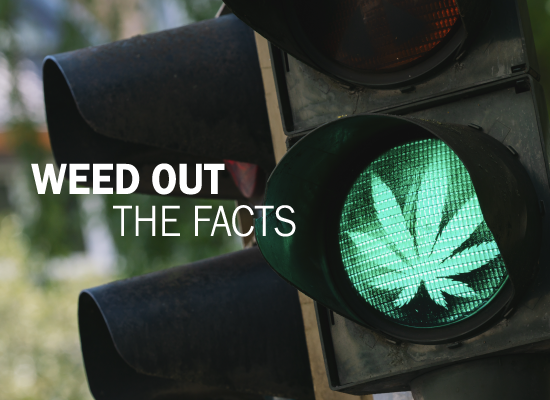
State marijuana-impaired driving laws
“Driving while under the influence (DUI)” means that the driver is incapable of driving safely due to the effects of drug or alcohol use. The nationally recognized blood alcohol level of .08% or more generally establishes that the driver is under the influence. For drivers who are under the age of 21 years, the blood alcohol level threshold is even lower. In addition, a driver holding a commercial driver’s license or operating a DOT-regulated vehicle has lower threshold levels for blood alcohol levels.
When marijuana is involved, however, states have different approaches to establishing that the driver was under the influence. There is no similar national standard for drugged driving as there is for alcohol use.
States[1] with a zero tolerance law which prohibits driving with any amount of THC, the primary psychoactive ingredient in marijuana, in the body are Arizona, Delaware, Georgia, Indiana, Iowa, Michigan, Oklahoma, Pennsylvania, Rhode Island, South Dakota*, Utah and Wisconsin.
In states with so-called “per se” DUI laws, drivers with a certain amount of marijuana in their system are considered under the influence. Those states are Illinois, Montana, Nevada, Ohio and Washington.
Colorado has a permissible inference law which means that, if THC is identified in a driver’s blood in quantities of 5mg/ml or higher, it is permissible to assume that the driver was under the influence.
The remaining states have driving under the influence of drugs (DUID) laws that require the driver to be under the influence of or affected by THC.
Now, many states have made it legal to use marijuana for medicinal purposes. But, as of the writing of this article, no state has said “it’s okay” to drive after using medical marijuana, even when the patient has followed the required usage rules to the letter.
We can anticipate that at least for the near future, as drug impairment tests become more widely available and reliable, that detection rates will increase accordingly, creating a greater ability to track marijuana-impaired driving.
*South Dakota has a zero tolerance law for drivers under the age of 21.
References
[1] State law information presented in this article is from the NCSL website, https://www.ncsl.org/research/transportation/drugged-driving (as of March 8, 2019.)